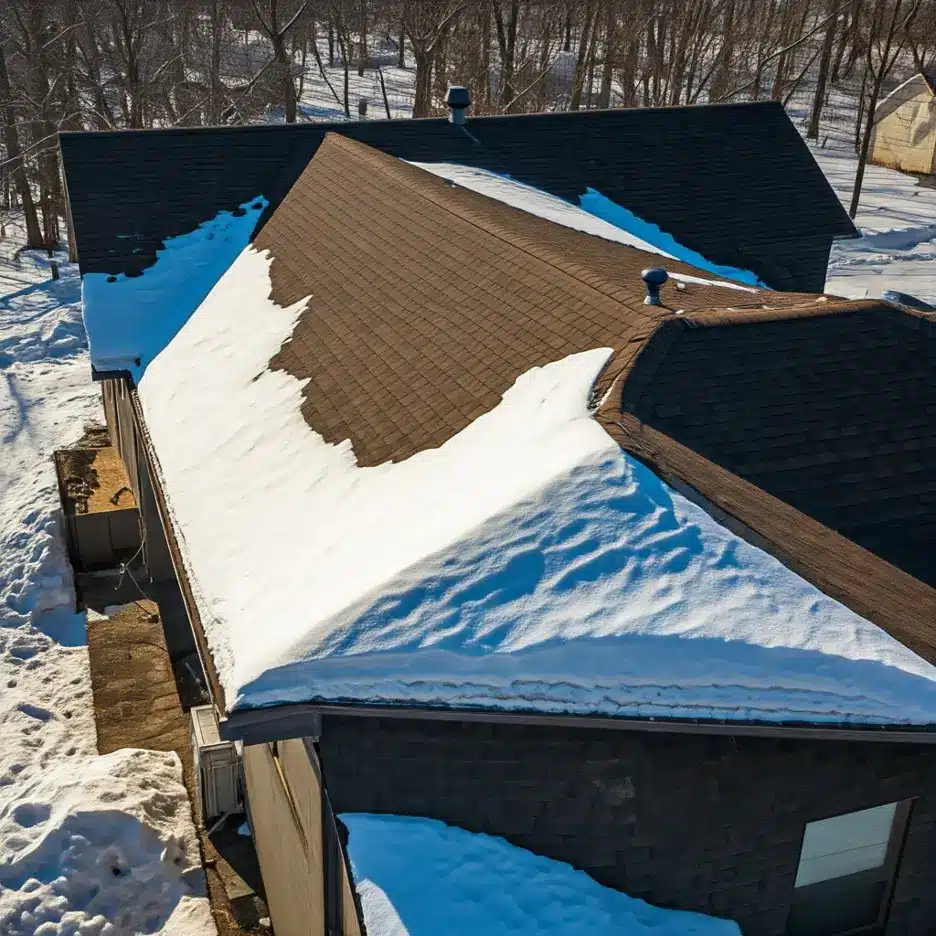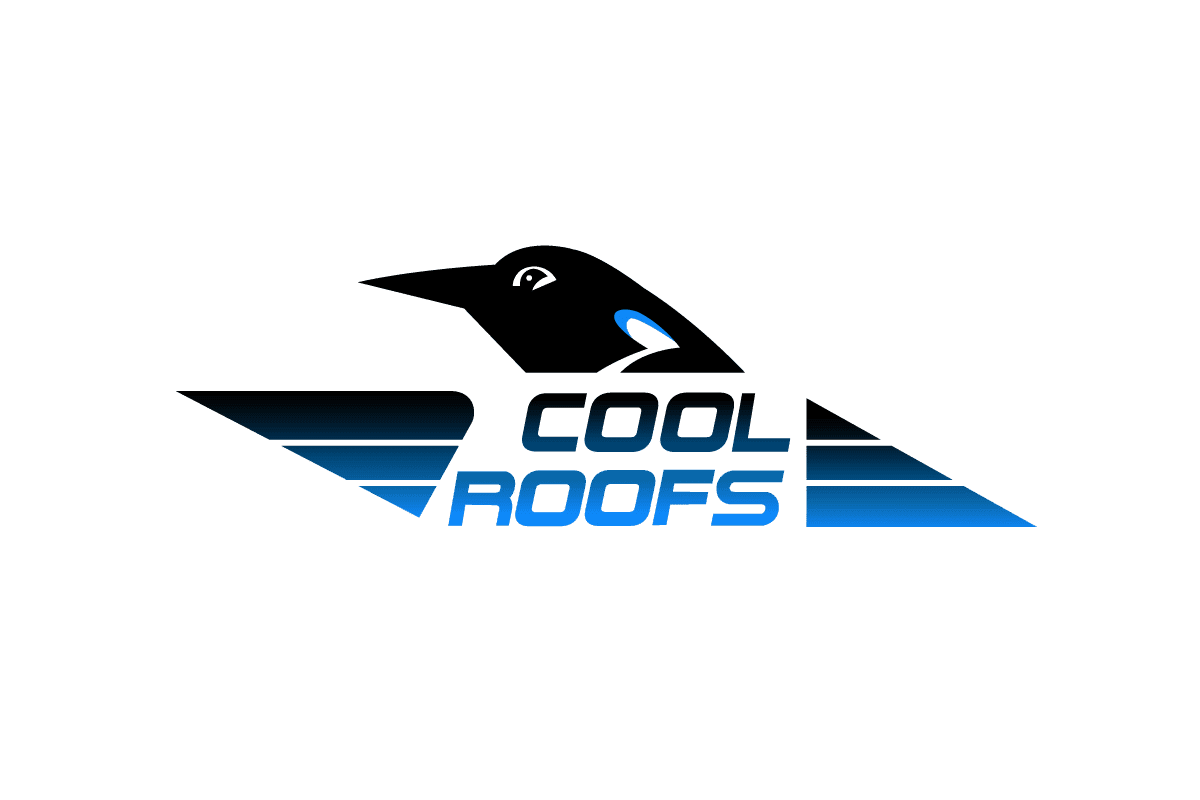While ice dams are relatively rare in Austin, the increasing frequency of extreme weather events makes understanding and preventing them crucial for homeowners. When winter temperatures fluctuate between freezing and above-freezing, proper roof protection becomes essential for preventing ice dam formation and subsequent water damage. This comprehensive guide explores ice dam prevention strategies specifically tailored for Austin homes.
Key Takeaways:
- What Are Ice Dams and Why Do They Form?
- How Do Austin’s Weather Patterns Affect Ice Dam Risk?
- What Role Does Insulation Play in Prevention?
- How Can Ventilation Prevent Ice Dams?
- What Warning Signs Should You Watch For?
- Which Prevention Methods Work Best?
- When Should You Seek Professional Help?
- How Do You Address Existing Ice Dams?
- What Long-term Solutions Are Available?
- How Can You Monitor Ice Dam Risk?

What Are Ice Dams and Why Do They Form?
Ice dams occur when heat from your attic causes snow or ice on your roof to melt, which then refreezes at the colder eaves. While rare in Austin, these conditions can develop during severe winter weather events, particularly when temperatures fluctuate around freezing. Understanding the formation process is crucial for prevention:
- Heat escapes through poorly insulated roofs
- Snow or ice melts on warmer roof sections
- Water flows toward colder eaves
- Refreezing creates ice buildup
- Water backs up behind ice formations
How Do Austin’s Weather Patterns Affect Ice Dam Risk?
Austin’s unique climate presents specific challenges for ice dam formation. While the city experiences fewer freezing days than northern regions, sudden temperature drops combined with precipitation can create perfect conditions for ice dam development. Professional roofing contractors observe that:
The rapid temperature fluctuations common in Austin winters can create ideal conditions for ice formation. Most ice dam issues occur during rare but severe winter storms when temperatures hover around freezing for extended periods. The city’s typically mild climate often means homes aren’t built with extensive ice protection, making them more vulnerable when severe weather strikes.
What Role Does Insulation Play in Prevention?
Proper insulation serves as your first line of defense against ice dam formation. A well-insulated roof maintains consistent surface temperatures, preventing the freeze-thaw cycle that leads to ice dams. Key insulation considerations include:
- R-value requirements specific to Austin’s climate
- Strategic placement in attic spaces
- Proper depth and distribution
- Air seal integrity
- Material selection for local conditions
How Can Ventilation Prevent Ice Dams?
Ventilation works hand-in-hand with insulation to prevent ice dam formation. A properly ventilated attic maintains temperatures close to outdoor conditions, reducing the likelihood of snow melt and refreezing. Essential ventilation components include:
Balanced intake and exhaust vents positioned for optimal airflow. Properly sized ventilation channels that remain unobstructed. Strategic placement of vents to eliminate hot spots. Integration with existing insulation systems. Regular maintenance to ensure continued effectiveness.
What Warning Signs Should You Watch For?
Early detection of potential ice dam conditions can prevent significant damage. Homeowners should monitor several key indicators:
- Icicles forming along roof edges
- Snow melting in patches while remaining frozen elsewhere
- Ice buildup in gutters or along eaves
- Interior ceiling stains or water marks
- Visible ice accumulation behind gutters
Professional roofing contractors recommend regular winter inspections to identify these warning signs before they develop into serious problems.
Which Prevention Methods Work Best?
Prevention strategies for ice dams must be tailored to Austin’s specific climate conditions. Effective methods include:
A comprehensive approach combining multiple prevention techniques typically yields the best results. Professional contractors recommend starting with proper insulation and ventilation, then adding specialized features as needed. Heat cable installation, while sometimes necessary, should be considered a supplementary rather than primary solution.
The most effective prevention methods include:
- Maintaining adequate attic insulation levels
- Ensuring proper ventilation throughout the attic space
- Installing ice and water barriers during roof replacement
- Maintaining clean and functional gutter systems
- Implementing professional-grade snow and ice removal protocols
When Should You Seek Professional Help?
Professional intervention becomes crucial in several situations:
Before winter weather arrives, having a professional assessment can identify potential problem areas and allow for preventive measures. During severe weather events, professional monitoring can catch ice dam formation early. After discovering signs of ice dam development, immediate professional intervention can prevent extensive damage. Regular professional maintenance helps ensure prevention systems continue functioning effectively.
What Warning Signs Should You Watch For?
Early detection of potential ice dam conditions can prevent significant damage. Homeowners should monitor several key indicators:
- Icicles forming along roof edges
- Snow melting in patches while remaining frozen elsewhere
- Ice buildup in gutters or along eaves
- Interior ceiling stains or water marks
- Visible ice accumulation behind gutters
Professional roofing contractors recommend regular winter inspections to identify these warning signs before they develop into serious problems.
Which Prevention Methods Work Best?
Prevention strategies for ice dams must be tailored to Austin’s specific climate conditions. Effective methods include:
A comprehensive approach combining multiple prevention techniques typically yields the best results. Professional contractors recommend starting with proper insulation and ventilation, then adding specialized features as needed. Heat cable installation, while sometimes necessary, should be considered a supplementary rather than primary solution.
The most effective prevention methods include:
- Maintaining adequate attic insulation levels
- Ensuring proper ventilation throughout the attic space
- Installing ice and water barriers during roof replacement
- Maintaining clean and functional gutter systems
- Implementing professional-grade snow and ice removal protocols
When Should You Seek Professional Help?
Professional intervention becomes crucial in several situations:
Before winter weather arrives, having a professional assessment can identify potential problem areas and allow for preventive measures. During severe weather events, professional monitoring can catch ice dam formation early. After discovering signs of ice dam development, immediate professional intervention can prevent extensive damage. Regular professional maintenance helps ensure prevention systems continue functioning effectively.
How Do You Address Existing Ice Dams?
When ice dams form despite preventive measures, proper removal becomes crucial. Professional roofing contractors recommend a systematic approach to ice dam removal that prioritizes roof safety and prevents further damage:
- Avoid DIY removal methods that could damage roofing materials
- Document ice formation patterns for future prevention
- Use professional-grade steam removal techniques
- Implement emergency drainage solutions
- Address underlying causes during removal process
Immediate response protocol should include:
Professional assessment of ice dam extent and potential damage. Implementation of emergency heat trace systems if necessary. Careful removal using appropriate techniques and equipment. Installation of temporary prevention measures. Development of long-term prevention strategies.
What Long-term Solutions Are Available?
Long-term ice dam prevention requires a comprehensive approach that addresses underlying causes. Professional contractors typically recommend:
Creating a multi-layered protection system that includes both passive and active measures. Installing permanent ice barriers during roof replacement or major repairs. Upgrading insulation and ventilation systems to prevent future formation. Implementing smart monitoring systems for early detection. Developing maintenance schedules that address seasonal risks.
Key long-term solutions should focus on:
- Structural improvements to prevent heat loss
- Advanced ventilation system installation
- Modern ice prevention technology integration
- Regular professional maintenance programs
- Updated emergency response protocols
How Can You Monitor Ice Dam Risk?
Effective monitoring of ice dam risk requires vigilance and proper tools. Professional roofing experts recommend establishing a monitoring system that includes:
Regular roof inspections during winter months, particularly after temperature fluctuations. Use of thermal imaging to identify potential hot spots. Monitoring weather forecasts for high-risk conditions. Installing moisture sensors in vulnerable areas. Maintaining detailed records of previous ice dam formation patterns.
While ice dams may be relatively rare in Austin, proper prevention and monitoring remain crucial for protecting your home during severe winter weather events. Understanding formation patterns, implementing effective prevention measures, and maintaining professional oversight can significantly reduce the risk of ice dam-related damage.
The investment in proper ice dam prevention not only protects your home from water damage but also contributes to overall energy efficiency and roof longevity. Remember that professional guidance is essential for developing and implementing effective prevention strategies specific to your home’s needs.

